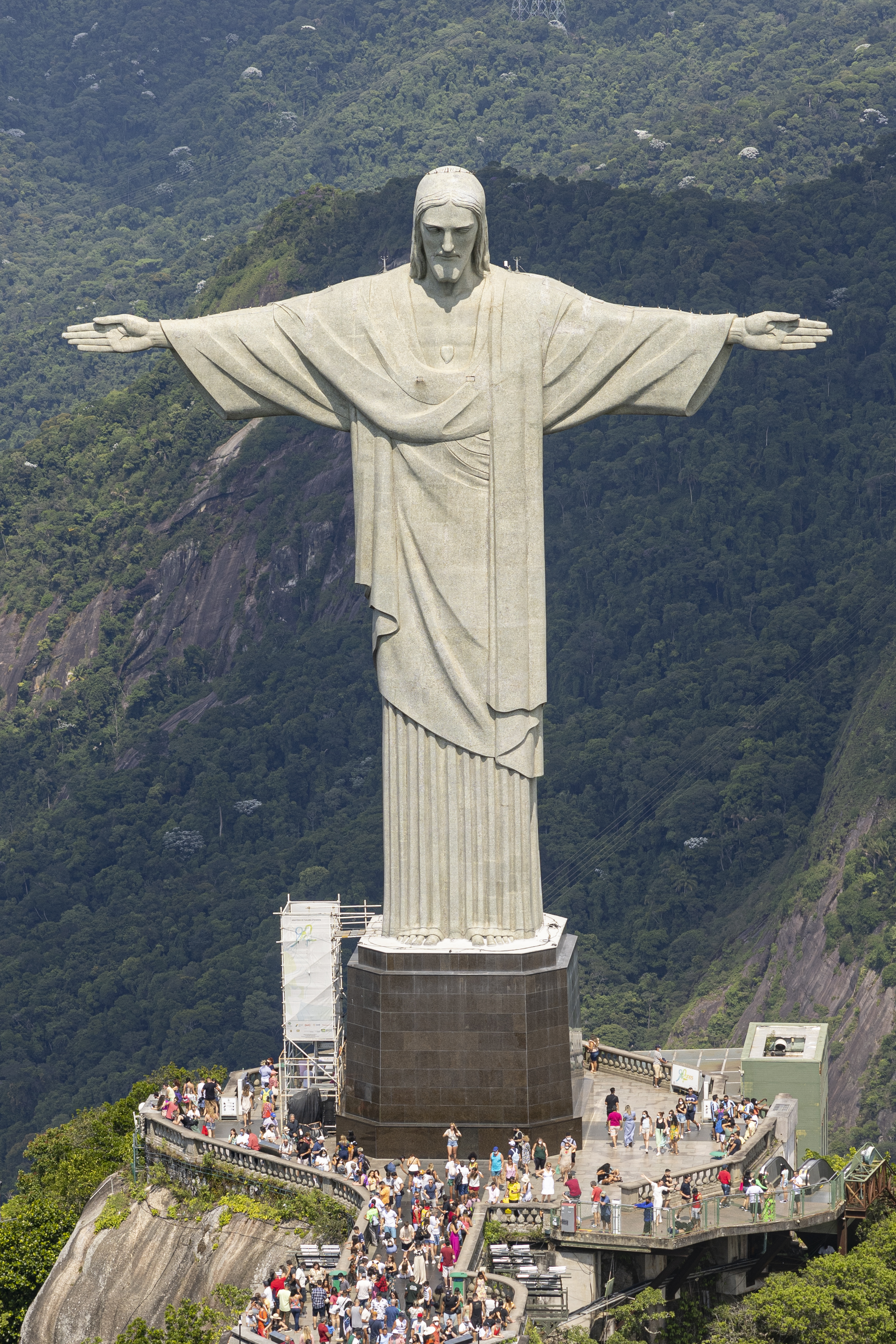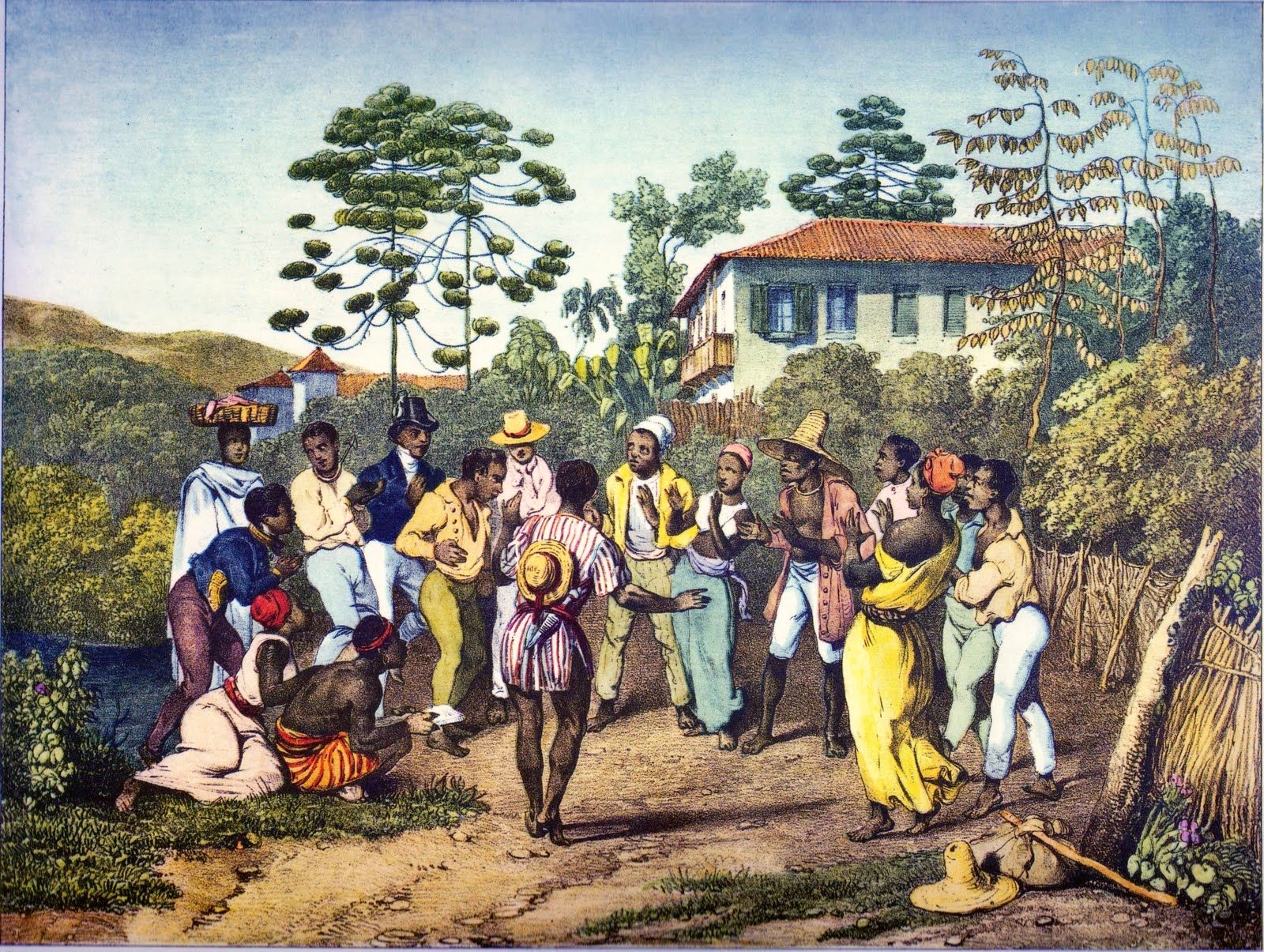|
Afro-Brazilian
Afro-Brazilians (; ), also known as Black Brazilians (), are Brazilians of total or predominantly Sub-Saharan African ancestry. Most multiracial Brazilians also have a range of degree of African ancestry. Brazilians whose African features are more evident are generally seen by others as Blacks and may identify themselves as such, while the ones with less noticeable African features may not be seen as such. However, Brazilians rarely use the term "Afro-Brazilian" as a term of ethnic identity and never in informal discourse. ''Black people#Brazil, Preto'' ("black") and ''Pardo Brazilians, pardo'' ("brown/mixed") are among five ethnic categories used by the Brazilian Institute of Geography and Statistics (IBGE), along with ''White Brazilians, branco'' ("white"), ''Asian Brazilians, amarelo'' ("yellow", ethnic East Asian), and ''Indigenous peoples in Brazil, indígena'' (indigenous). In the 2022 census, 20.7 million Brazilians (10,2% of the population) identified as ''preto'', while ... [...More Info...] [...Related Items...] OR: [Wikipedia] [Google] [Baidu] |
Religion In Brazil
The predominant religion in Brazil is Christianity, with Catholicism being its largest denomination. In 1891, when the first Brazilian Constitution of 1891, Brazilian Republican Constitution was set forth, Brazil ceased to have an official religion and has remained secular ever since, though the Catholic Church remained politically influential into the 1970s. The constitution of Brazil guarantees Freedom of religion in Brazil, freedom of religion and strongly prohibits the State religion, establishment of any religion by banning government support or hindrance of religion at all levels. Overview Brazil possesses a richly spiritual society formed from the meeting of the Catholic Church with the religious traditions of enslaved Africans and indigenous people. This confluence of faiths during the Portuguese colonization of Brazil led to the development of a diverse array of syncretistic practices within the overarching umbrella of Roman Catholicism in Brazil, Brazilian Catholicis ... [...More Info...] [...Related Items...] OR: [Wikipedia] [Google] [Baidu] |
Capoeira
Capoeira () is an Afro-Brazilian martial art and game that includes elements of dance, acrobatics, capoeira music, music, and spirituality. It likely originated from enslaved Mbundu people, of the Kingdom of Ndongo, in present-day Angola. The Mbundu of Ndongo had a formal military in which soldiers were professionally trained for combat. When Mbundu people were captured and sold into the Atlantic Slave Trade, they would have brought these fighting abilities with them to Brazil, where it developed into Capoeira. It is known for its acrobatic and complex manoeuvres, often involving hands on the ground and inverted kicks. It emphasizes flowing movements rather than fixed stances; the ''List of capoeira techniques#Ginga, ginga'', a rocking step, is usually the focal point of the technique. Though often said to be a martial art disguised as a dance, capoeira served not only as a form of self defense, but also as a way to maintain spirituality and culture. Capoeira has been practic ... [...More Info...] [...Related Items...] OR: [Wikipedia] [Google] [Baidu] |
Black Movement In Brazil
''Movimento Negro'' (or Black Movement) is a generic name given to the diverse Afro-Brazilian social movements that occurred in 20th-century Brazil, particularly those movements that appeared in post-World War II Rio de Janeiro and São Paulo. History Social movements involving Black groups are found throughout Brazil's history. However, until the abolition of slavery in 1888, these social movements were almost always clandestine and radical in nature since their main objective was the liberation of black slaves. Since slaves were treated like private property, escapes and insurrections threatened the social order along with causing economic harm. These insurrections became the object of violent repression not only by the ruling class, but also by the state and its agents. Pre-abolition Black resistance Quilombos, Quilombolas, and Quilombagem The principal form of embodiment of resistance against slavery by black rebel movements for nearly four centuries (1549–1888) was quilomba ... [...More Info...] [...Related Items...] OR: [Wikipedia] [Google] [Baidu] |
Samba
Samba () is a broad term for many of the rhythms that compose the better known Brazilian music genres that originated in the Afro-Brazilians, Afro Brazilian communities of Bahia in the late 19th century and early 20th century, It is a name or prefix used for several rhythmic variants, such as samba urbano carioca (''urban Carioca samba''), samba de roda (sometimes also called ''rural samba''), among many other forms of samba, mostly originated in the Rio de Janeiro (state), Rio de Janeiro and Bahia states. Having its roots in Brazilian mythology, Brazilian folk traditions, especially those linked to the primitive rural samba of the Colonial Brazil, colonial and Empire of Brazil, imperial periods, is considered one of the most important cultural phenomena in Brazil and one of the country symbols. Present in the Portuguese language at least since the 19th century, the word "samba" was originally used to designate a "popular dance". Over time, its meaning has been extended to a "B ... [...More Info...] [...Related Items...] OR: [Wikipedia] [Google] [Baidu] |
Indigenous Peoples In Brazil
Indigenous peoples in Brazil or Native Brazilians () are the peoples who lived in Brazil before European contact around 1500 and their descendants. Indigenous peoples of the Americas, Indigenous peoples once comprised an estimated 2,000 district tribes and nations inhabiting what is now Brazil. The 2010 Brazil census recorded 305 ethnic groups of Indigenous people who spoke 274 Indigenous languages of the Americas, Indigenous languages; however, almost 77% speak Portuguese language, Portuguese. Historically, many Indigenous peoples of Brazil were semi-nomadic and combined hunting, fishing, and hunter-gatherer, gathering with migratory agriculture. Many tribes were massacred by European settlers, and others assimilated into the growing European population Brazilians, Brazilian population. The Indigenous population was decimated by European diseases, declining from a pre-Columbian high of 2 million to 3 million to approximately 300,000 by 1997, distributed among 200 tribes. Accor ... [...More Info...] [...Related Items...] OR: [Wikipedia] [Google] [Baidu] |
Minas Gerais
Minas Gerais () is one of the 27 federative units of Brazil, being the fourth largest state by area and the second largest in number of inhabitants with a population of 20,539,989 according to the 2022 Brazilian census, 2022 census. Located in the Southeast Region, Brazil, Southeast Region of the country, it is bordered to south and southwest by São Paulo (state), São Paulo; Mato Grosso do Sul to the west; Goiás and the Federal District (Brazil), Federal District to the northwest; Bahia to the north and northeast; Espírito Santo to the east; and Rio de Janeiro (state), Rio de Janeiro to the southeast. The state's capital and largest city, Belo Horizonte, is a major urban and finance center in Brazil, being the List of largest cities in Brazil#Top 115 most populous cities and state capitals, sixth most populous municipality in the country while its Greater Belo Horizonte, metropolitan area ranks as the List of metropolitan areas in Brazil, third largest in Brazil with just ov ... [...More Info...] [...Related Items...] OR: [Wikipedia] [Google] [Baidu] |
Brazilians
Brazilians (, ) are the citizens of Brazil. A Brazilian can also be a person born abroad to a Brazilian parent or legal guardian as well as a person who acquired Brazilian nationality law, Brazilian citizenship. Brazil is a multiethnic society, which means that it is home to people of many ethnic origins. Being Brazilian is a civic phenomenon, rather than an ethnic one. As a result, the degree to which Brazilian citizens identify with their ancestral roots varies significantly depending on the individual, the Regions of Brazil, region of the country, and the specific ethnic origins in question. Most often, however, the idea of ethnicity as it is understood in the anglophone world is not popular in the country. After the colonization of Brazil by the Portuguese Brazilians, Portuguese, most of the 16th century, the word "Brazilian" was given to the Portuguese merchants of the Brazilwood tree, designating exclusively the name of such profession, since the inhabitants of the land w ... [...More Info...] [...Related Items...] OR: [Wikipedia] [Google] [Baidu] |
Black People
Black is a racial classification of people, usually a political and skin color-based category for specific populations with a mid- to dark brown complexion. Not all people considered "black" have dark skin and often additional phenotypical characteristics are relevant, such as facial and hair-texture features; in certain countries, often in socially based systems of racial classification in the Western world, the term "black" is used to describe persons who are perceived as dark-skinned compared to other populations. It is most commonly used for people of sub-Saharan African ancestry, Indigenous Australians and Melanesians, though it has been applied in many contexts to other groups, and is no indicator of any close ancestral relationship whatsoever. Indigenous African societies do not use the term ''black'' as a racial identity outside of influences brought by Western cultures. Contemporary anthropologists and other scientists, while recognizing the reality of biological ... [...More Info...] [...Related Items...] OR: [Wikipedia] [Google] [Baidu] |
São Paulo (state)
São Paulo (, ) is one of the Federative units of Brazil, 26 states of the Brazil, Federative Republic of Brazil and is named after Paul the Apostle, Saint Paul of Tarsus. It is located in the Southeast Region, Brazil, Southeast Region and is bordered by the states of Minas Gerais to the north and northeast, Paraná (state), Paraná to the south, Rio de Janeiro (state), Rio de Janeiro to the east and Mato Grosso do Sul to the west, in addition to the Atlantic Ocean to the southeast. It is divided into List of municipalities in São Paulo, 645 municipalities. The total area is km2, which is equivalent to 2.9% of Brazil's surface, being slightly larger than the United Kingdom. Its capital is the São Paulo, municipality of São Paulo. With more than 44 million inhabitants in 2022, São Paulo is the Federative units of Brazil#List, most populous Brazilian state (around 22% of the Brazilian population), the List of first-level administrative divisions by population, world's 28th-mos ... [...More Info...] [...Related Items...] OR: [Wikipedia] [Google] [Baidu] |
Bahia
Bahia () is one of the 26 Federative units of Brazil, states of Brazil, located in the Northeast Region, Brazil, Northeast Region of the country. It is the fourth-largest Brazilian state by population (after São Paulo (state), São Paulo, Minas Gerais, and Rio de Janeiro (state), Rio de Janeiro) and the 5th-largest by area. Bahia's capital is the city of Salvador, Bahia, Salvador (formerly known as "Cidade do São Salvador da Bahia de Todos os Santos", literally "City of the Holy Savior of the Bay of All the Saints"), on a Spit (landform), spit of land separating the Bay of All Saints from the Atlantic. Once a stronghold of supporters of direct rule of Brazil by the Portuguese monarchy, and dominated by Agriculture in Brazil, agricultural, Slavery in Brazil, slaving, and ranching interests, Bahia is now a predominantly Working class, working-class industrial and agricultural state. The state is home to 7% of the Brazilian population and produces 4.2% of the country's GDP. It is ... [...More Info...] [...Related Items...] OR: [Wikipedia] [Google] [Baidu] |
Pardo Brazilians
In Brazil, Pardo () is an ethno-racial and skin color category used by the Brazilian Institute of Geography and Statistics (IBGE) in the Brazilian censuses. The term "''pardo''" is a complex one, more commonly used to refer to Brazilians of mixed ethnic ancestries. Pardo Brazilians represent a diverse range of skin colors and ethnic backgrounds. The other recognized census categories are ''branco'' ("white"), ''preto'' ("black"), '' amarelo'' ("yellow", meaning ethnic East Asians), and ''indígena'' ("indigene" or "indigenous person", meaning Amerindians). The term was and is still commonly used, in popular culture and the media, to refer to Brazilians of multi ethnic backgrounds. Definitions According to IBGE (Brazilian Institute of Geography and Statistics), ''pardo'' is a broad classification that encompasses multiracial Brazilians such as '' mulatos'' and '' cafuzos'', as well as assimilated Amerindians known as '' caboclos'', mixed with Southern Europeans or not. The ... [...More Info...] [...Related Items...] OR: [Wikipedia] [Google] [Baidu] |
Rio De Janeiro (state)
Rio de Janeiro () is one of the States of Brazil, 27 federative units of Brazil. It has the second largest economy of Brazil, with the largest being that of the state of São Paulo (state), São Paulo. The state, which has 8.2% of the Brazilian population, is responsible for 9.2% of the Brazilian Gross domestic product, GDP. The state of Rio de Janeiro is located within the Brazilian geopolitical region classified as the Southeast Region, Brazil, Southeast (assigned by Brazilian Institute of Geography and Statistics, IBGE). Rio de Janeiro shares borders with all the other states in the same Southeast macroregion: Minas Gerais (North, N and Ordinal directions, NW), Espírito Santo (Ordinal direction, NE) and São Paulo (state), São Paulo (Ordinal directions, SW). It is bounded on the east and south by the South Atlantic Ocean. Rio de Janeiro has an area of . Its capital is the city of Rio de Janeiro, Rio de Janeiro, Rio de Janeiro, which was the capital of the Portuguese Colonial ... [...More Info...] [...Related Items...] OR: [Wikipedia] [Google] [Baidu] |









